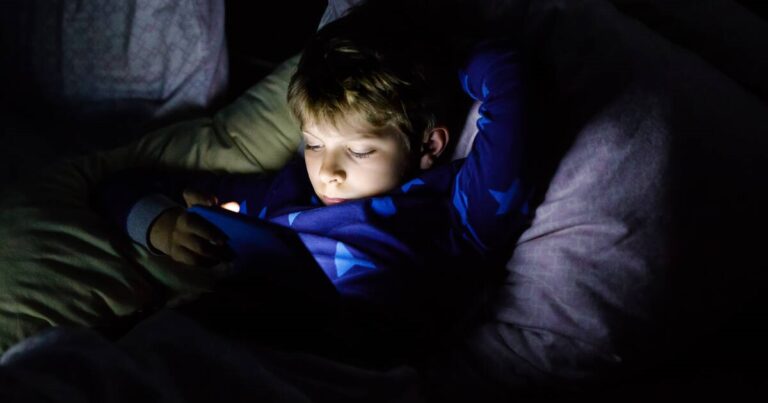As modern parents grapple with the digital age, setting boundaries for children’s screen time becomes crucial. Gone are the days when the biggest childhood distraction was a noisy toy. Now, screens of all sorts beguile our little ones with their bright lights and endless entertainment. But how do we manage this digital allure without sparking tantrums or rebellions? The key lies in setting clear rules from the get-go and adjusting as needed over time.
1. Set Specific Screen-Free Times
Sabine Duflo, a noted psychologist, advocates for the “4-step” method to manage screen time: no screens in the morning, during meals, right before bed, and keep devices out of children’s bedrooms. This approach helps children engage more fully with the world around them without digital distractions.
2. Tailor Screen Time to Age
Psychiatrist Serge Tisseron suggests a gradual introduction to screens based on age groups: no screens before age 3, then incrementally increasing durations as the child grows older—twenty minutes for ages 3-6, and up to an hour for those over 10. This method acknowledges developmental needs and limits overexposure.
3. Choose the Right Device for the Right Age
Experts advise against television for children under 3 and recommend postponing video games until after 6. Internet browsing should begin at age 9 with adult supervision, evolving into limited independent use at age 12 with parental controls in place.
4. Enforce Limits Through Actions
Simply telling kids to turn off their devices isn’t enough. Concrete measures like setting parental controls, limiting screen time via your internet router, and enforcing strict viewing schedules can make a significant difference.
5. Lead by Example
Michel Desmurget, a researcher and author, points out that children are more likely to read if they see their parents doing it. To encourage reading over gaming, parents should put away their phones, visit libraries together, and make reading a shared activity.
6. Highlight the Benefits of Good Sleep
Screen use before bedtime is linked to sleep disorders, particularly in pre-teens and teenagers. By turning off screens in the evening, parents can help ensure their children get a restful night’s sleep, vital for overall health and well-being.
7. Rethink the Smartphone for School
While it might be comforting to equip your child with a smartphone for middle school, a basic cell phone is often adequate for communication and safety.
8. Discuss the Dangers of Overexposure
Excessive screen time can lead to mental health issues, anxiety, eating disorders, and concentration problems. Parents should discuss these potential risks with their children to foster a healthier approach to screen use.
9. Don’t Dwell on Past Mistakes
If you’ve allowed your child more screen time than recommended, don’t fret. Reset the rules and communicate the updated guidelines clearly. It’s never too late to make positive changes.
10. Promote Screen-Free Activities
Encouraging physical and recreational activities can make screen-free time more appealing. Associating non-screen time with fun interactions like playing with friends, engaging in sports, or exploring hobbies can help children find joy away from digital devices.
Navigating the digital landscape with children doesn’t have to be a battle. By setting clear, age-appropriate guidelines and leading by example, parents can help their children develop a balanced relationship with technology.






